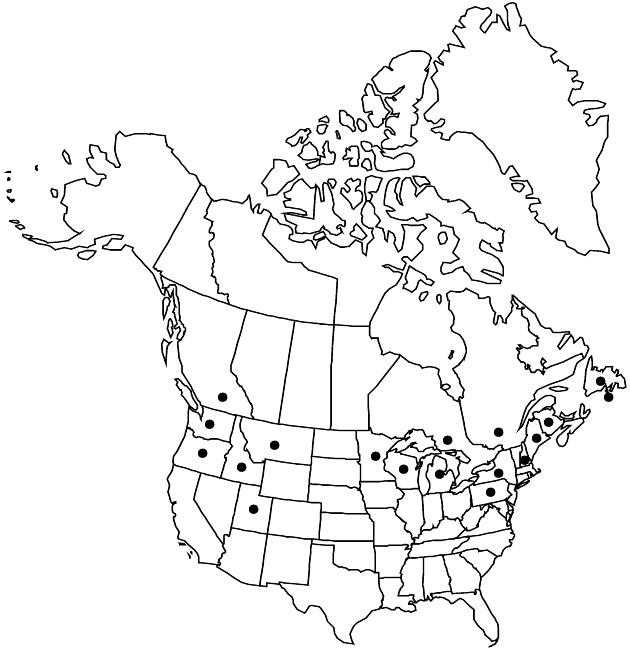Difference between revisions of "Centaurea montana"
Sp. Pl. 2: 911. 1753.
FNA>Volume Importer |
imported>Volume Importer |
||
| (6 intermediate revisions by 2 users not shown) | |||
| Line 8: | Line 8: | ||
}} | }} | ||
|common_names=Mountain cornflower or bluet;centaurée des montagnes | |common_names=Mountain cornflower or bluet;centaurée des montagnes | ||
| + | |special_status={{Treatment/ID/Special_status | ||
| + | |code=I | ||
| + | |label=Introduced | ||
| + | }} | ||
|basionyms= | |basionyms= | ||
|synonyms= | |synonyms= | ||
| Line 24: | Line 28: | ||
|elevation=0–1400 m | |elevation=0–1400 m | ||
|distribution=St. Pierre and Miquelon;B.C.;N.B.;Nfld. and Labr. (Nfld.);Ont.;Que.;Alaska;Idaho;Maine;Mich.;Minn.;Mont.;N.H.;N.Y.;Oreg.;Pa.;Utah;Wash.;Wis.;Europe. | |distribution=St. Pierre and Miquelon;B.C.;N.B.;Nfld. and Labr. (Nfld.);Ont.;Que.;Alaska;Idaho;Maine;Mich.;Minn.;Mont.;N.H.;N.Y.;Oreg.;Pa.;Utah;Wash.;Wis.;Europe. | ||
| − | |discussion=<p>Centaurea montana is a very handsome plant, native to the mountains of Europe, now widely cultivated as an ornamental.</p> | + | |introduced=true |
| + | |discussion=<p><i>Centaurea montana</i> is a very handsome plant, native to the mountains of Europe, now widely cultivated as an ornamental.</p> | ||
|tables= | |tables= | ||
|references= | |references= | ||
| Line 33: | Line 38: | ||
-->{{#Taxon: | -->{{#Taxon: | ||
name=Centaurea montana | name=Centaurea montana | ||
| − | |||
|authority=Linnaeus | |authority=Linnaeus | ||
|rank=species | |rank=species | ||
| Line 48: | Line 52: | ||
|publication title=Sp. Pl. | |publication title=Sp. Pl. | ||
|publication year=1753 | |publication year=1753 | ||
| − | |special status= | + | |special status=Introduced |
| − | |source xml=https:// | + | |source xml=https://bitbucket.org/aafc-mbb/fna-data-curation/src/2e0870ddd59836b60bcf96646a41e87ea5a5943a/coarse_grained_fna_xml/V19-20-21/V19_208.xml |
|tribe=Asteraceae tribe Cardueae | |tribe=Asteraceae tribe Cardueae | ||
|genus=Centaurea | |genus=Centaurea | ||
Latest revision as of 19:50, 5 November 2020
Perennials, 25–80 cm, from rhizomes or stolons. Stems 1–several, erect, simple or sparingly branched, villous with septate hairs and thinly arachnoid-tomentose with long, simple hairs. Leaves thinly villous and ± tomentose, glabrate; proximal leaves winged-petiolate, blades 10–30 cm, margins entire or remotely dentate to pinnately lobed; mid and distal leaves sessile, blades decurrent, ovate to oblong or lanceolate, entire or remotely denticulate. Heads radiant, borne singly or in few-headed corymbiform arrays; (peduncles to 7 cm). Involucres ovoid to ± campanulate, 20–25 mm. Principal phyllaries: bodies greenish, ovate to lanceolate, scarious-margined, appendages appressed, brown to black, unarmed, decurrent on phyllary margins, pectinate-fringed, puberulent; innermost phyllaries sometimes unappendaged. Florets 35–60+; sterile florets 10–20, corollas blue (white, purple, or pink), 2.5–4.5 cm, corolla tube elongate. Disc florets 25–40+; corollas purple, ca. 20 mm; anthers dark blue-purple. Cypselae ± brown, 5–6 mm, sericeous; pappi of bristles 0.5–1.5 mm. 2n = 24 (Germany), 40 (Russia), 44 (France).
Phenology: Flowering summer (Jun–Aug).
Habitat: Escaped from cultivation, roadsides, woodlands, sagebrush scrub
Elevation: 0–1400 m
Distribution

Introduced; St. Pierre and Miquelon, B.C., N.B., Nfld. and Labr. (Nfld.), Ont., Que., Alaska, Idaho, Maine, Mich., Minn., Mont., N.H., N.Y., Oreg., Pa., Utah, Wash., Wis., Europe.
Discussion
Centaurea montana is a very handsome plant, native to the mountains of Europe, now widely cultivated as an ornamental.
Selected References
None.